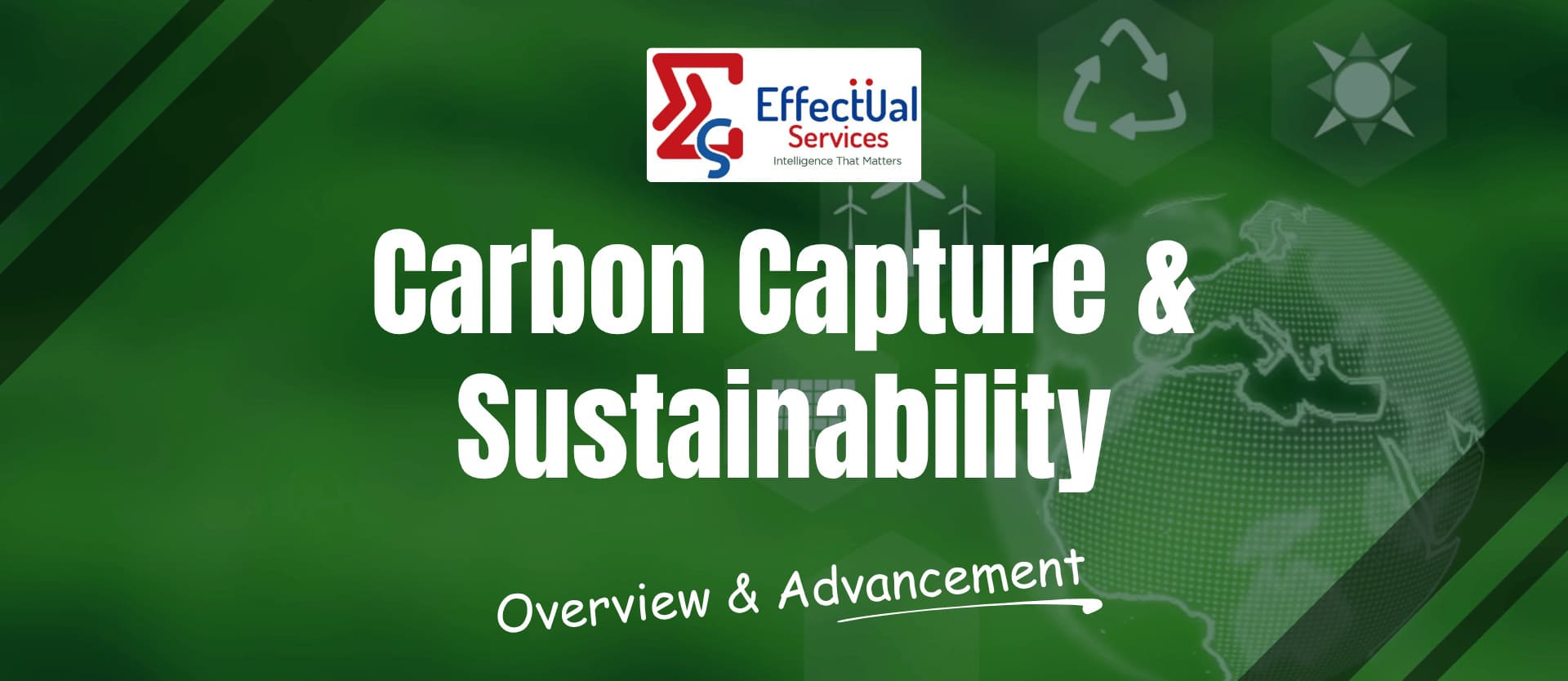Carbon Capture & Sustainability An Overview & Advancement

Historical Development for Carbon capture technology
Carbon capture technology has roots dating back to the 1930s when carbon dioxide was first separated from natural gas streams. However, its environmental application began in earnest during the 1970s when enhanced oil recovery (EOR) created commercial use cases for captured CO₂. The first dedicated carbon capture and storage (CCS) project specifically designed for climate mitigation was Norway's Sleipner project, which began operation in 1996 in response to that country's carbon tax.
In the natural gas industry, technology to remove CO2 from raw natural gas was patented in 1930. This processing is essential to make natural gas ready for commercial sale and distribution. Usually after CO2 is removed, it is vented to the atmosphere. Subsequently, natural gas companies in Texas began capturing the CO2 produced by their processing plants and selling it to local oil producers for EOR. Small-scale implementations were first demonstrated in the early 1980s and an economic evaluation was published in 1991. The first large-scale CO2 capture and injection project with dedicated CO2 storage and monitoring was commissioned at the Sleipner gas field in Norway in 1996.
Advancements in Carbon Capture and Sustainability
Carbon capture and sequestration (CCS) is a three-tier process- carbon capture, transport and storage. The capture consists of pre-combustion, oxy-combustion and post-combustion capture. Transport of CO2 is most viable through pipelines. The biotic CO2storage occurs through terrestrial or oceanic pathways and can be simulated naturally or artificially. The abiotic/geologic storage is achieved through sequestering CO2 in depleting/depleted hydrocarbon reserves, in deep saline aquifers or through mineral carbonation. At the district level, 64 out of 641 districts (2013 government reports) accounted for ∼ 60% of the total CO2 emissions. Controlling CO2 emissions comes with the challenge of sustainable socio-economic growth of the country- a demanding task for the economy.
Carbon capture and storage represented as CCS, is a technique that can be used to cut down on emissions of CO2 from industrial sources. These mechanisms can balance the excess fossil fuel usage and lead to effective carbon capture from the atmosphere and storing it in safe spaces. This can negate global warming and send the carbon back to geological spaces inside the earth. This review covers the operational mechanism of such technologies from its inception to the material innovation along with the transport of CO2 and its storage options. Breakthroughs in recent years have made it possible to design effective carbon capture and safe spaces for its storage. A comprehensive worldwide case studies are presented for both successful CCS project implementation and their environmental impact assessment. Lessons learned from these case examples are reflected through the challenges and policy hurdles with its impact on the global economy. An outlook is provided for the role of CCS in net zero emissions, renewables integration and advancing CCS research. By leveraging innovation across capture, utilization, and storage stages, CCS holds immense potential to play a transformative role in combating climate change and achieving global sustainability goals.

